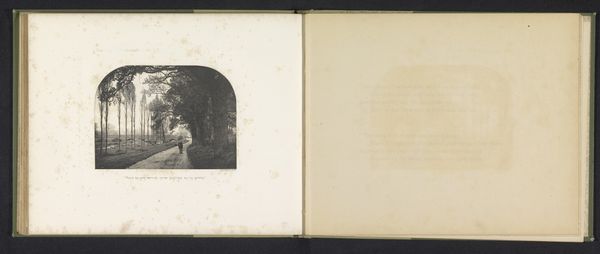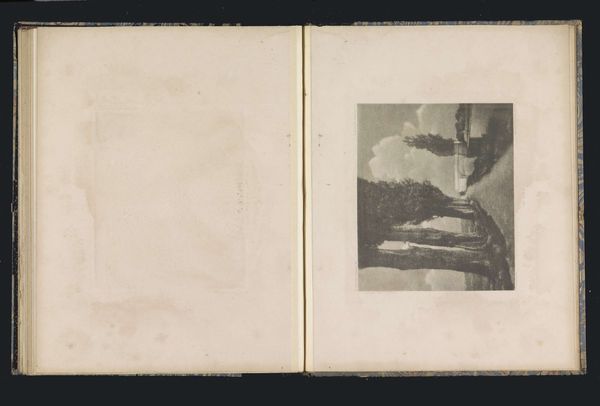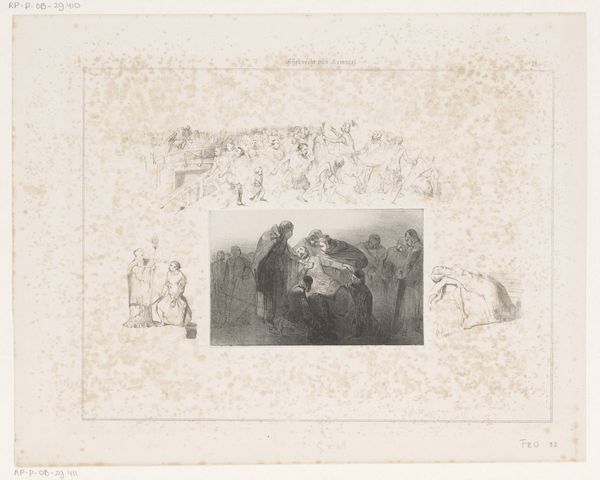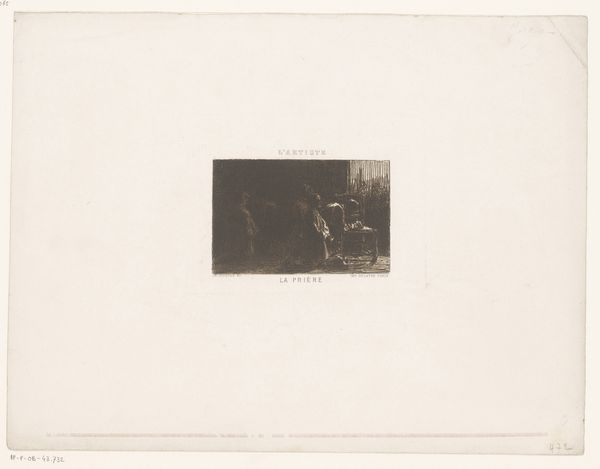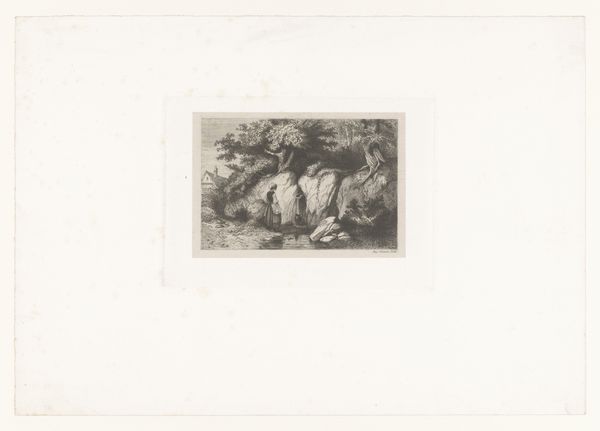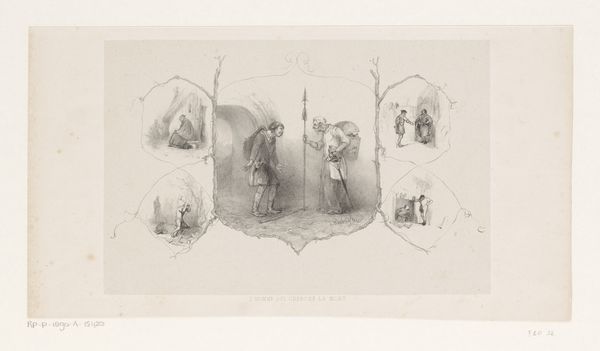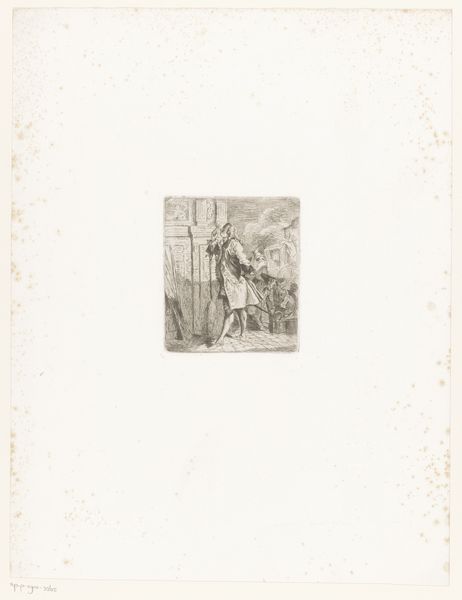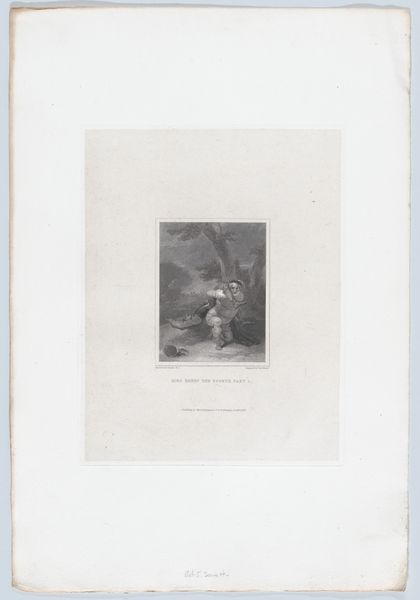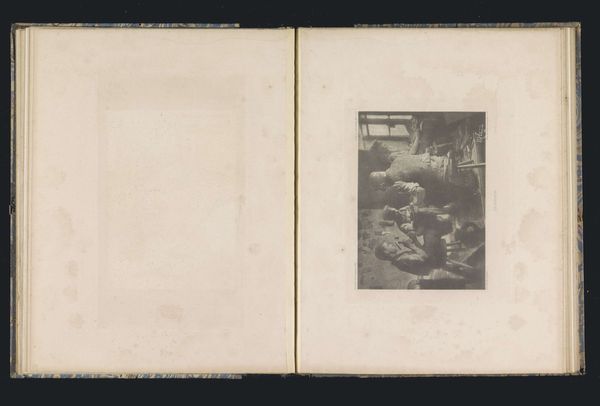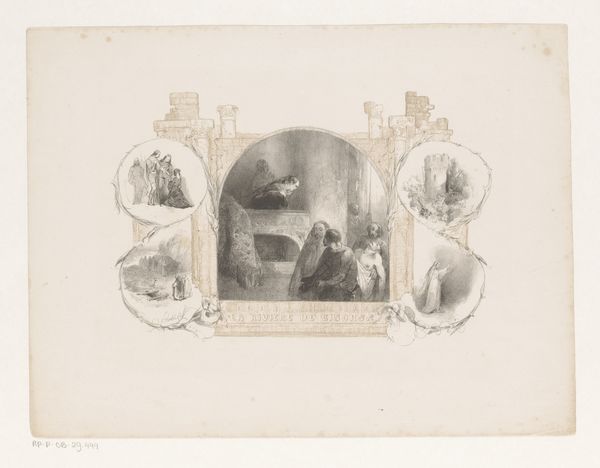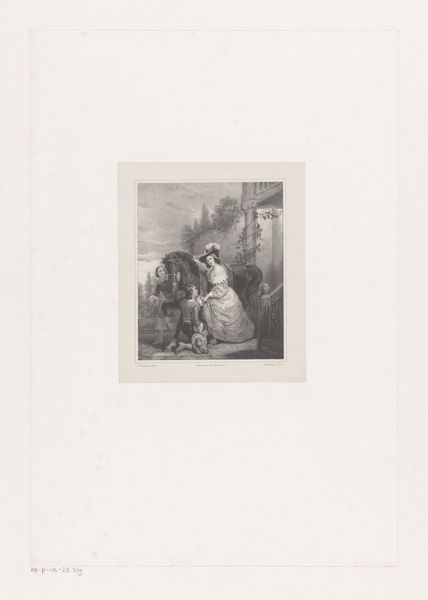
drawing, paper, pen
#
drawing
#
narrative-art
#
landscape
#
figuration
#
paper
#
romanticism
#
pen
#
genre-painting
Dimensions: height 344 mm, width 508 mm
Copyright: Rijks Museum: Open Domain
Editor: Here we have Léon Cogniet’s "Roman Girl Filling a Water Jug," from around 1824, rendered with pen on paper. It’s interesting how a mundane task is elevated through the artist’s attention to detail. What aspects stand out to you? Curator: I'm drawn to how Cogniet uses the simple materials—pen and paper—to depict a specific scene of labor. Consider the socio-economic implications: access to clean water was a daily, physical demand. The artwork’s value, however, lies in its aesthetic representation of that very labor, transforming a mundane chore into a piece for consumption. Does that labor become romanticized by the medium itself? Editor: So you're suggesting the material quality – the fineness of the pen strokes – sort of masks the reality of daily labor? Curator: Precisely. The artwork is commodified through its materiality. Pen on paper is easily reproduced and distributed. This accessibility potentially brings art closer to the people but, simultaneously, further abstracts it from the reality of labor that it depicts. It's a paradox. Editor: That's a really interesting point, the idea that something so easily produced can represent something so essential and, potentially, difficult. It does change my view of the work. Curator: And, consider the composition: The Roman setting contributes to this romanticised ideal. The jug itself and the public well become significant objects within a cultural and historical context, pointing toward resource distribution. Editor: Right. I initially saw a simple genre scene. But your perspective really sheds light on the role of materials and their relationship to class and consumption. Thank you. Curator: Indeed, art doesn't exist in a vacuum, the material of this drawing brings us to explore broader questions of labor, value, and cultural representation in a period of rapid industrial change.
Comments
No comments
Be the first to comment and join the conversation on the ultimate creative platform.
